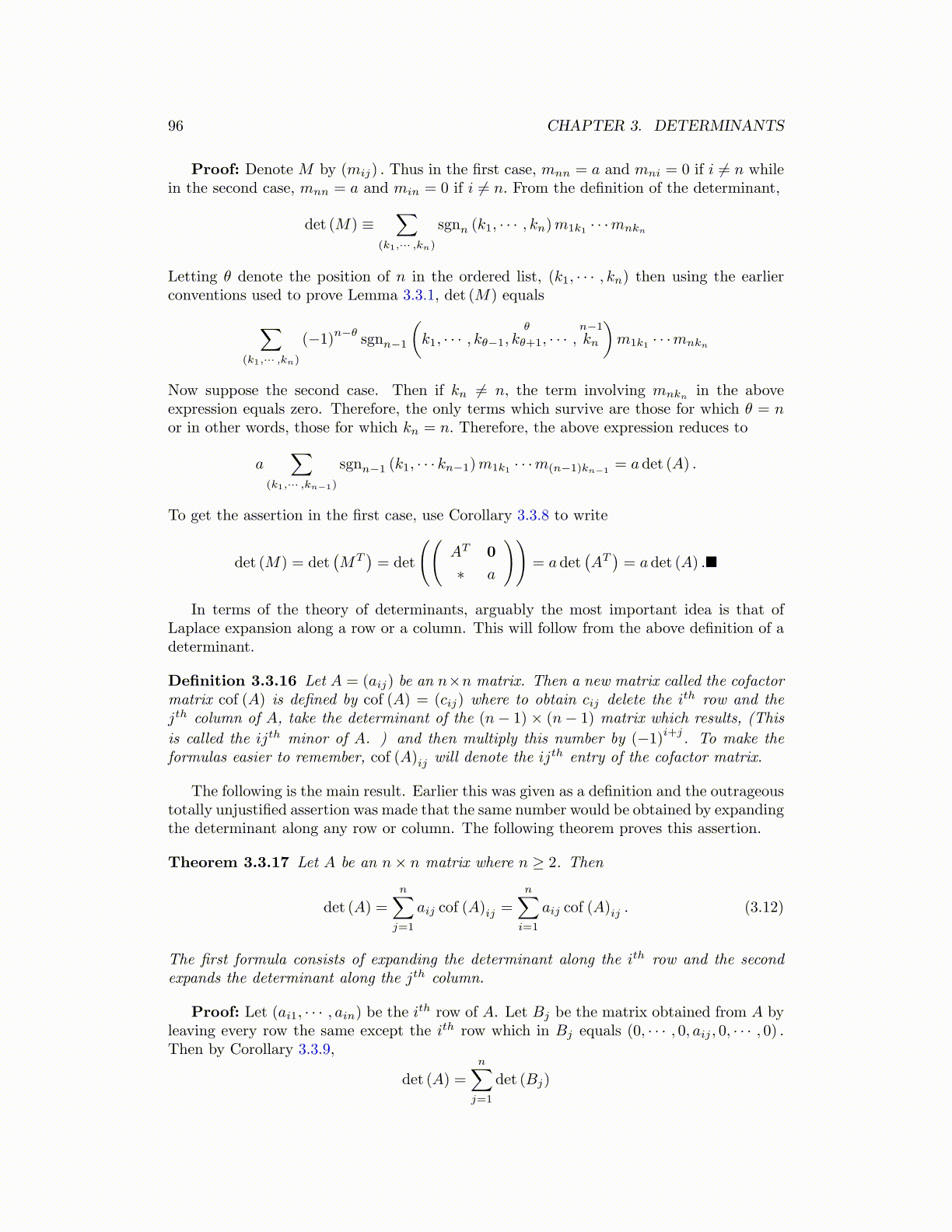
96 CHAPTER 3. DETERMINANTS
Proof: Denote M by (mij) . Thus in the first case, mnn = a and mni = 0 if i ̸= n whilein the second case, mnn = a and min = 0 if i ̸= n. From the definition of the determinant,
det (M) ≡∑
(k1,··· ,kn)
sgnn (k1, · · · , kn)m1k1· · ·mnkn
Letting θ denote the position of n in the ordered list, (k1, · · · , kn) then using the earlierconventions used to prove Lemma 3.3.1, det (M) equals
∑(k1,··· ,kn)
(−1)n−θ
sgnn−1
(k1, · · · , kθ−1,
θ
kθ+1, · · · ,n−1
kn
)m1k1 · · ·mnkn
Now suppose the second case. Then if kn ̸= n, the term involving mnknin the above
expression equals zero. Therefore, the only terms which survive are those for which θ = nor in other words, those for which kn = n. Therefore, the above expression reduces to
a∑
(k1,··· ,kn−1)
sgnn−1 (k1, · · · kn−1)m1k1 · · ·m(n−1)kn−1= a det (A) .
To get the assertion in the first case, use Corollary 3.3.8 to write
det (M) = det(MT
)= det
((AT 0
∗ a
))= adet
(AT)= adet (A) .■
In terms of the theory of determinants, arguably the most important idea is that ofLaplace expansion along a row or a column. This will follow from the above definition of adeterminant.
Definition 3.3.16 Let A = (aij) be an n×n matrix. Then a new matrix called the cofactormatrix cof (A) is defined by cof (A) = (cij) where to obtain cij delete the ith row and thejth column of A, take the determinant of the (n− 1)× (n− 1) matrix which results, (This
is called the ijth minor of A. ) and then multiply this number by (−1)i+j
. To make theformulas easier to remember, cof (A)ij will denote the ijth entry of the cofactor matrix.
The following is the main result. Earlier this was given as a definition and the outrageoustotally unjustified assertion was made that the same number would be obtained by expandingthe determinant along any row or column. The following theorem proves this assertion.
Theorem 3.3.17 Let A be an n× n matrix where n ≥ 2. Then
det (A) =
n∑j=1
aij cof (A)ij =
n∑i=1
aij cof (A)ij . (3.12)
The first formula consists of expanding the determinant along the ith row and the secondexpands the determinant along the jth column.
Proof: Let (ai1, · · · , ain) be the ith row of A. Let Bj be the matrix obtained from A byleaving every row the same except the ith row which in Bj equals (0, · · · , 0, aij , 0, · · · , 0) .Then by Corollary 3.3.9,
det (A) =
n∑j=1
det (Bj)